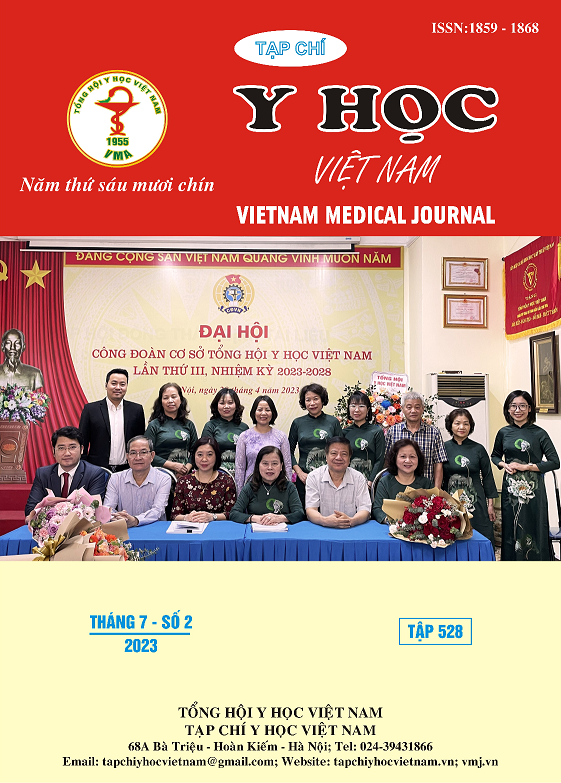EVALUATE THE ASSOCIATION BETWEEN MEDICATION ADHERENCE AND TACROLIMUS INTRA-PATIENT VARIABILITY (IPV) IN PATIENTS AFTER KIDNEY TRANSPLANTATION AT BACH MAI HOSPITAL
Main Article Content
Abstract
Objectives: This study aims to evaluate immunosuppressive medication adherence and the association between medication adherence and tacrolimus intra-patient variability (IPV) in patients after kidney transplantation at Bach Mai hospital. Subjects and methods: Cross-sectional study, interview patients using immunosuppressive therapy after kidney transplantation. Information on medical history, drug history, treatment regimens, adverse events, and tacrolimus trough concentrations were collected from outpatient medical records. The BAASIS questionnaire was used to assess medication adherence. Results: The percentage of patients who missed at least 1 dose and took the wrong time administration during 4 weeks was 51.8% and 47.8%, respectively. The percentage of medication adherence in the study was 23.2%. tacrolimus IPV in the adherence patients (33.6 ± 7.9) was lower than that of non-adherent patients (39.5 ± 10.2) (p < 0.001). Conclusion: The majority of patients in the study were non-adherent. Immunosuppressive medication adherence was associated with lower tacrolimus IPV.
Article Details
Keywords
Medication adherence, immunosuppressive medication, kidney transplatation
References
2. Denhaerynck K, Dobbels F, Košťálová B, De Geest S. Psychometric Properties of the BAASIS: A Meta-analysis of Individual Participant Data. Transplantation. 2023.
3. Ro H, Min SI, Yang J, Moon KC, Kim YS, Kim SJ, et al. Impact of tacrolimus intraindividual variability and CYP3A5 genetic polymorphism on acute rejection in kidney transplantation. Therapeutic drug monitoring. 2012; 34 (6): 680 - 5.
4. Xuan NT, Hop VQ, Kien TQ, Toan PQ, Thang LV, Binh HT, et al. Frequencies and Association of CYP3A5 Polymorphism With Tacrolimus Concentration Among Renal Transplant Recipients in Vietnam. Transplantation Proceedings. 2022; 54 (8): 2140 - 6.
5. Trung Hieu H, Tien Sy B. Risk Factors for Polyomavirus, Cytomegalovirus, and Viruria Co-Infection for Follow-Up of Renal Transplant Patients. Ann Transplant. 2022; 27: e937771.
6. Idress T, Badi S, Yousef B. Assessment of knowledge and practice of Sudanese renal transplant recipients about tacrolimus usage: A cross-sectional study. International Journal of Health & Allied Sciences. 2020; 9 (2): 136 - 42.
7. Ganjali R, Ghorban Sabbagh M, Nazemiyan F, Mamdouhi F, Badiee Aval S, Taherzadeh Z, et al. Factors Associated With Adherence To Immunosuppressive Therapy And Barriers In Asian Kidney Transplant Recipients. Immunotargets Ther. 2019; 8: 53 - 62.
8. Lennerling A, Forsberg A. Self-reported non-adherence and beliefs about medication in a Swedish kidney transplant population. Open Nurs J. 2012; 6: 41 - 6.


